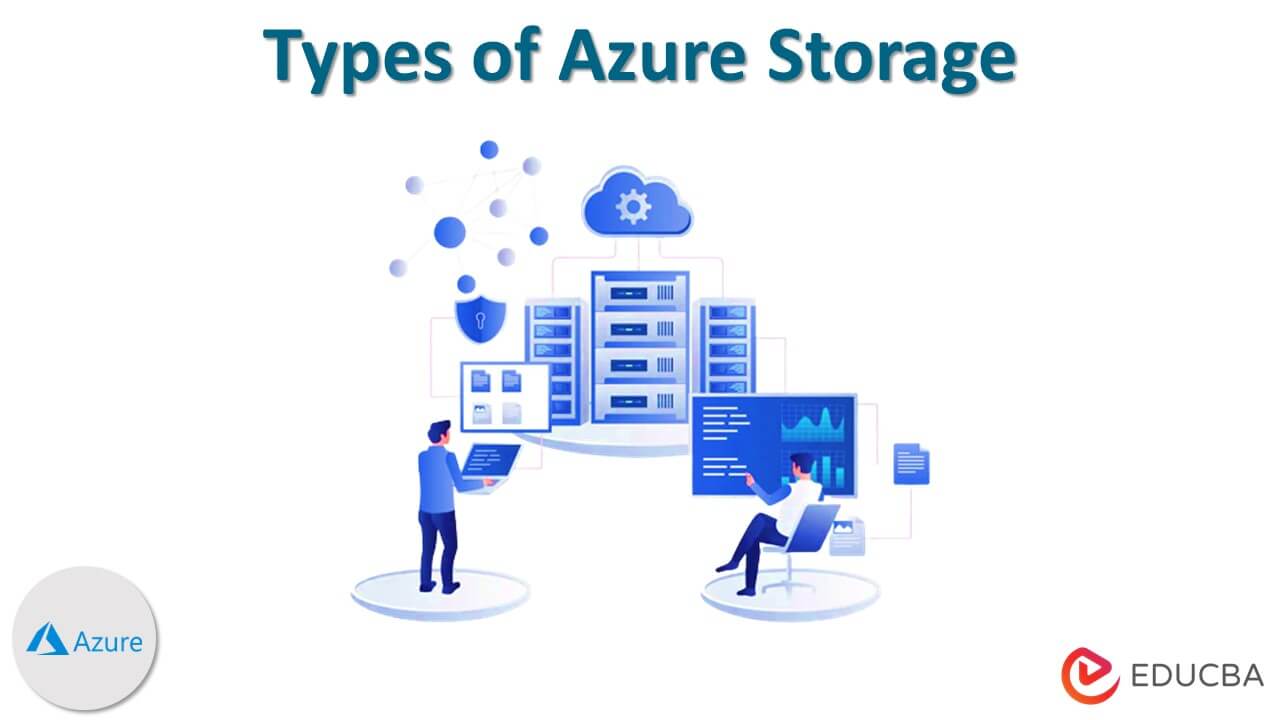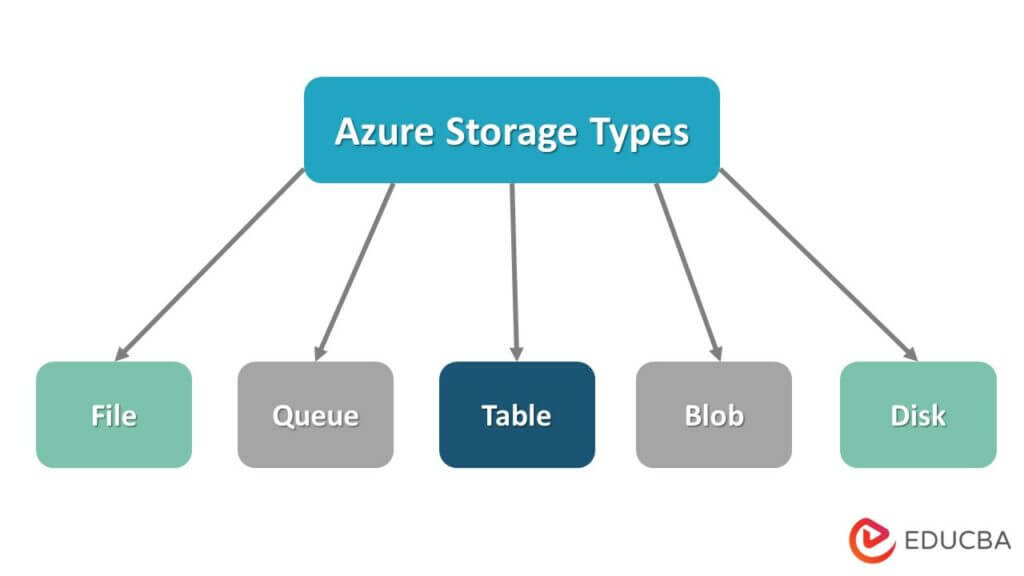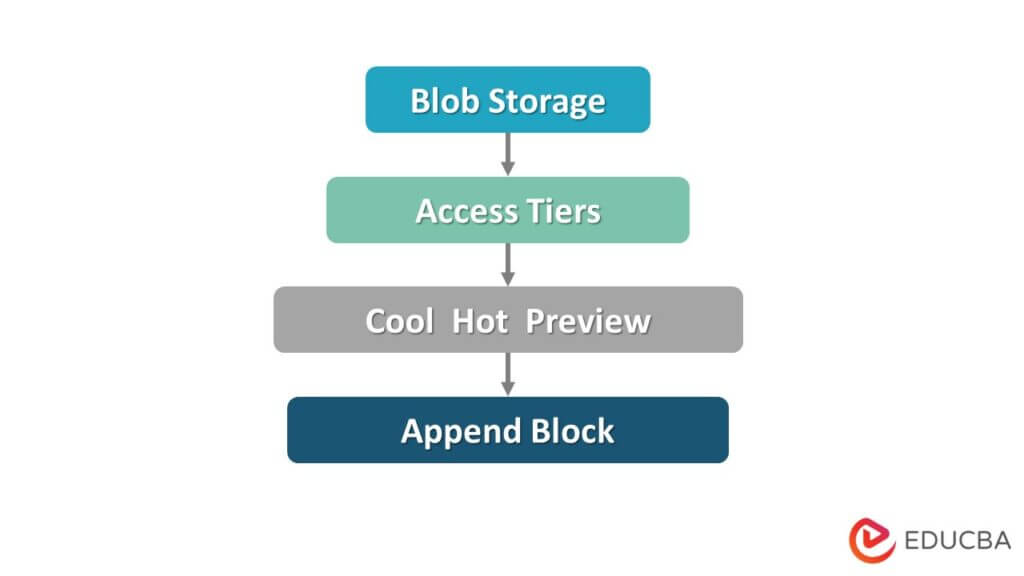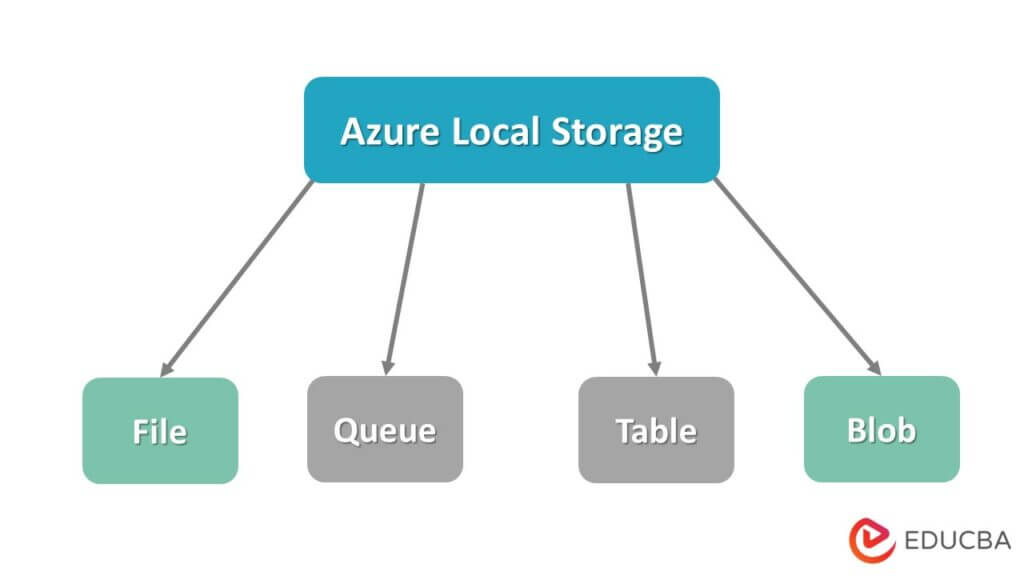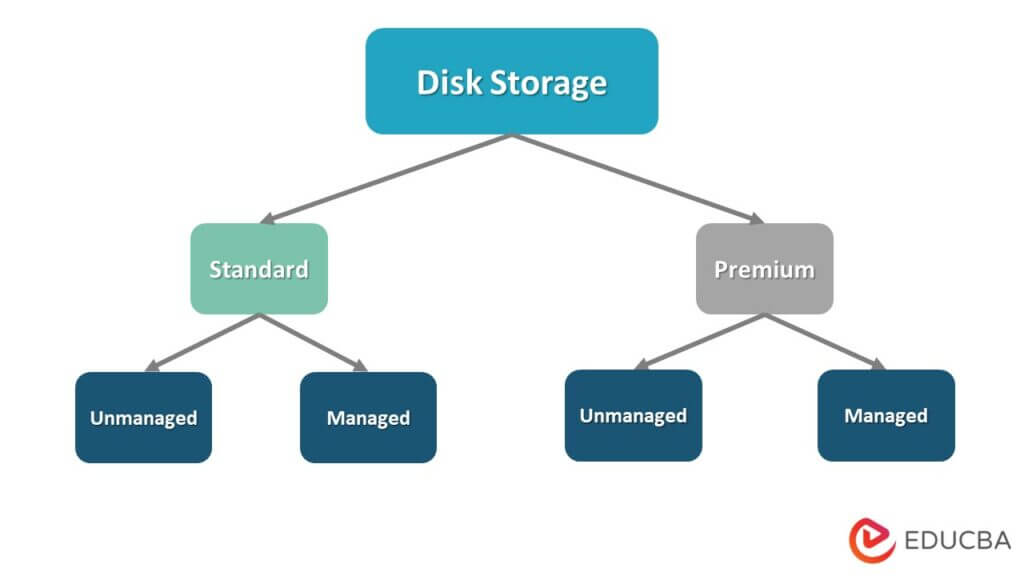Updated June 17, 2023
Introduction to Types of Azure Storage
The following article provides an outline for Types of Azure Storage. Azure provides different ways to store data based on requirements. Azure provides users with file type, cloud base storage, and NoSQL. Azure storage has different features, such as scalable durability and provides security for users for their data. Azure storage can access anywhere, anytime, whenever required because of cloud storage objects with the help of HTTP and HTTPS, and also, we have REST API for accessing data.
Modern applications that require long-term viability, availability, and scalability to satisfy their customers can benefit from Azure Storage, the cloud storage solution. The most cutting-edge answer to any storage issues is Azure Storage. It practically has an infinite storage capacity. Because it is a pay-as-We-go model, we can choose to only pay for what we use. .NET, Ruby, Java, and other clients are supported by Azure Storage services. We must have an Azure Storage account to use any storage services.
To begin, sign up for an Azure account. There are numerous ways to store data in Azure. Azure Table Storage, Azure SQL Database, and Azure Cosmos DB are a few options for databases. Event Hubs and Azure Queues are two examples of Azure’s various storage and messaging options. Using services like Azure Files and Azure Blobs, even loose files can be stored.
Key Takeaways
- It provides security to the code and data when data is on the cloud or while using.
- It provides an automated recovery function to the customer, so they can recover easily.
- Azure provides different storage types to users.
- Azure stores the data in an encrypted format, providing security.
Different Types of Azure Storage
Now let’s see different Azure storage one by one as well, as you can see the block diagram of Azure storage.
1. Blob Storage
One of the most common types of storage in Azure is Microsoft’s object storage, Azure Blob Storage, which is ideal for workloads requiring high-capacity storage. Microsoft designed Blob Storage specifically for data lakes, but it can also handle smaller workloads. Azure Blob Storage is enduring and scalable. Blob Storage can achieve 16 nines of durability when combined with geo-replication.
Although Blob Storage is the preferred type of Azure storage for many businesses, it can be pricey. With a one-year reservation, pricing for Blob Storage can also be complicated. There are numerous additional charges for operations and data transfer, in addition to tier, reservation, and capacity-based cost variations. Estimating the cost of Azure Blob Storage can be challenging.
The blob type is shown in the below diagram:
2. Files
This is the second way used by Microsoft to manage cloud-based. The cloud-based file server manages the customer’s data, supports SMB and NFS file types, and shares used for Windows and Linux operating systems. Azure file servers also support the Azure Kubernetes service as consistent container storage.
On the other hand, Microsoft’s administrators do the Windows server configuration on their work location and act as a cache for the file storage, ultimately improving the speed of operation. But when we talk about the price, it is difficult to calculate. Redundant storage means replicas, as shown in the below screenshot.
3. Queue Storage
This is the third type of Azure storage, and it is not used primarily but is still useful. The name itself has the explanation that means it is used to store the message in a queue, or we say that if we want to store the instruction of any web application, then we can use queue message type if our application asynchronously executes the job then admin usually required this type of storage type. The required size of a message is less than 64 kb as well as it supports different programming languages.
4. Table
If we want to store the data in a structured way and a huge amount, then we can use a table structure. Azure provides NoSQL, a non-relational database that uses the key and attributes. Azure also provides the SQL server. NoSQL is more flexible, and it enables different features for the users. Microsoft offers managed Azure Table storage so administrators can concentrate on their data without worrying about the server infrastructure.
5. Managed Disks
In the above point, we already discussed queue and table, but Azure provides disk storage for the specific user. Suppose the admin wants to create the VM, then admin and use it. When we use a disk, we also need to consider the performance of the requirement so that the admin can use the storage type. Block diagram as shown in the below figure.
Benefits of Azure Storage
Given below are the benefits mentioned:
- Durability and Availability: Data redundancy provides data security when the hardware is failing, so we can restore the data with the help of replicas across all the regions.
- Secure: Azure provides security to the customer because it stores the data in an encrypted mode, which means Azure provides control over the data.
- Scalable: Azure supports scalability means that as per performance and requirement, we can increase the storage.
- Managed: Azure support to maintain the different hardware, updates, and some critical application issues.
- Accessible: Through HTTP or HTTPS, data stored in Azure Storage can be accessed anywhere. In addition to a mature REST API, Microsoft provides client libraries for Azure Storage in various languages, including .NET, Java, Node.js, Python, PHP, Ruby, and Go. In Azure PowerShell or Azure CLI, scripting is supported for Azure Storage. The Azure portal and Storage Explorer provide straightforward visual tools for manipulating Wer data.
Conclusion
From the above article, we have taken in the essential idea of the types of Azure storage and saw the representation of the types of Azure storage. We also saw how and when we use the types of Azure storage.
Recommended Articles
This is a guide to Types of Azure Storage. Here we discuss the introduction and explanation of different types of azure storage and benefits. You may also have a look at the following articles to learn more –

